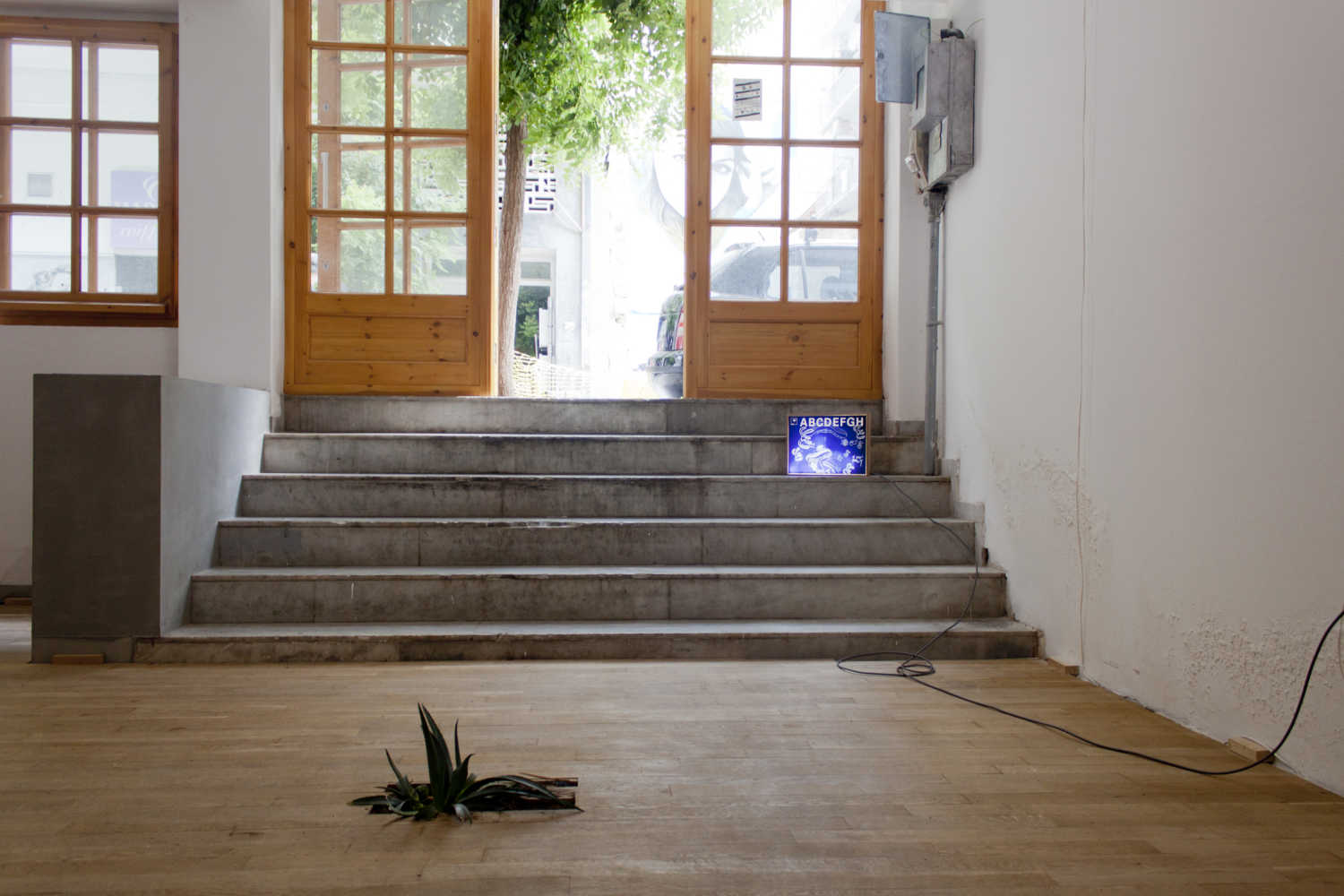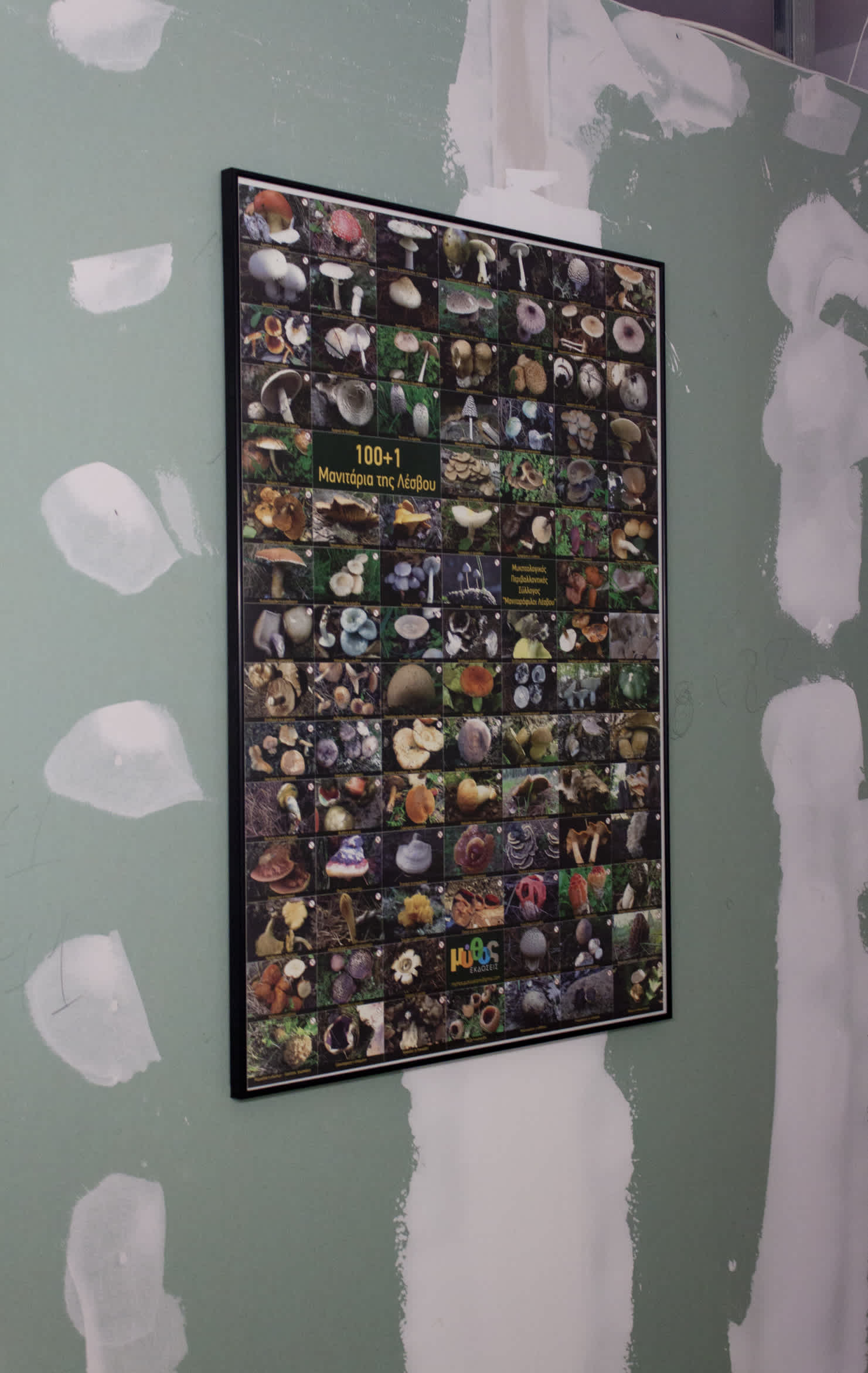2018
Architecture of Mobility
Installation

Installation resulting from a month long informal residency at the Lesvos Plant Medicine Center (Athens). With Jean-Francois Peschot (FR) and Aggelici Gali (GR). As a continuation of The Wandering School Part 2: Revolution or Bust, which took the form of a journey through Greece, Architectures of Mobility is an improptu exhibition influenced by the realization that the sacred today is intimately entangled with profane enterprises as tourism, industry economic exchange and development. Inspired by the song The Nightmare of Persephone by Nikos Gatsos, the artists use the context of the sacred and travel as a lens to examine a different relationships.
Acacia seed pods under a halo of TL-light. An athanatos agave stands next to gaseous lightbox. Close by, a piece of cryptic drywall. A poster depicting the mushroom ecology of Lesvos. Strips, tickets and the banality of commodification. Intrusions of the archetypal, a theophanic gaze on the Spectacle.
Jean-Francois Peschot’s (FR) work deals with time and space, interested in spaces and non-spaces in transition. Taking place in a building in a state of re-construction, Has Been Removed analyzes in the form of an essay poem printed on drywall a moment in time spent in an elevator . In Peschot’s work the mundane takes unexpected profound insight which transform the spaces and actions of everyday life.
Aggelica Gali (GR) is a mezzo soprano. In her composition The Night she evokes tension between the archaic and modern by utilizing a nearly lost form of Greek language, Katharevousa, an old form of Greek which still used a polytonic system. The piece recites under an enchanting melody a restrained description of the physiological affect of nighttime, above waves of undulating song.
Jeroen Kortekaas’ (NL) sculptural work utilizes the visual lexicon of signage, travel and gambling to evoke the notions of flight as counterweight to pervasive feelings of confinement and stagnation. Signs and methods of display from advertising and wayfinding are host to a private mythology where the languages of travel become synonymous to our desires for transformation. They appear as traffic signs without direction, sings of endless movements and immobilities.
Date:
28 June 2018

























